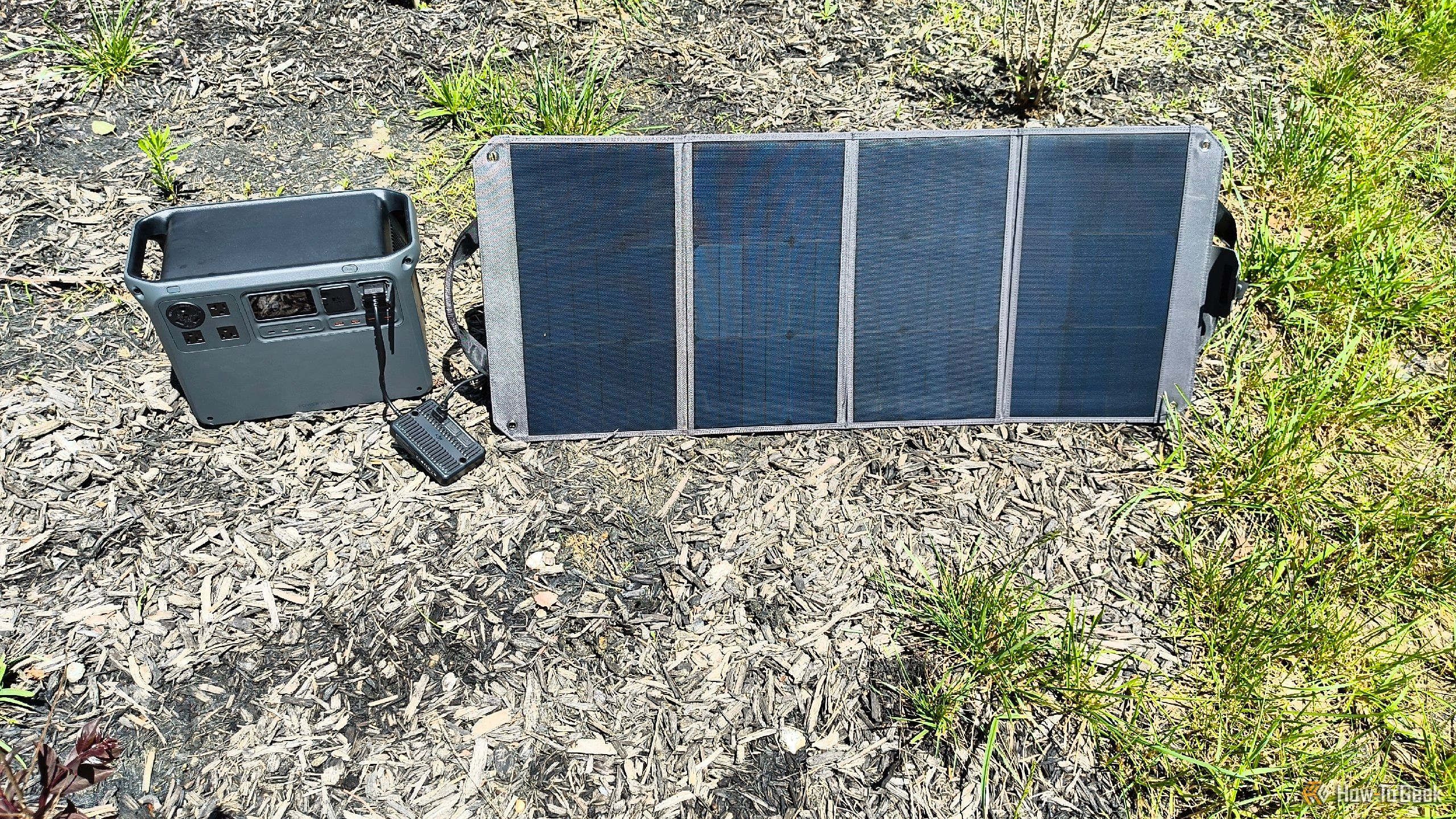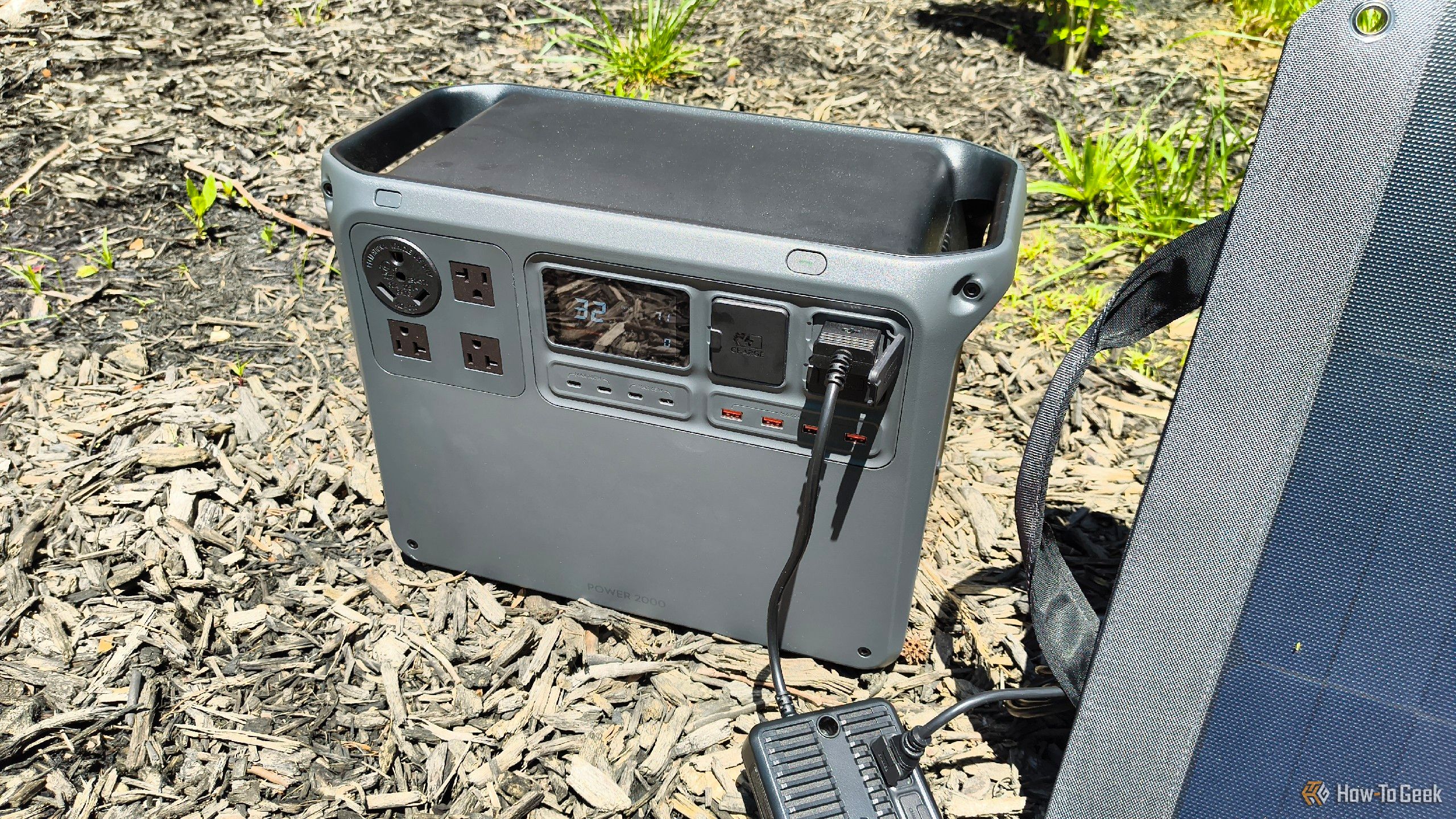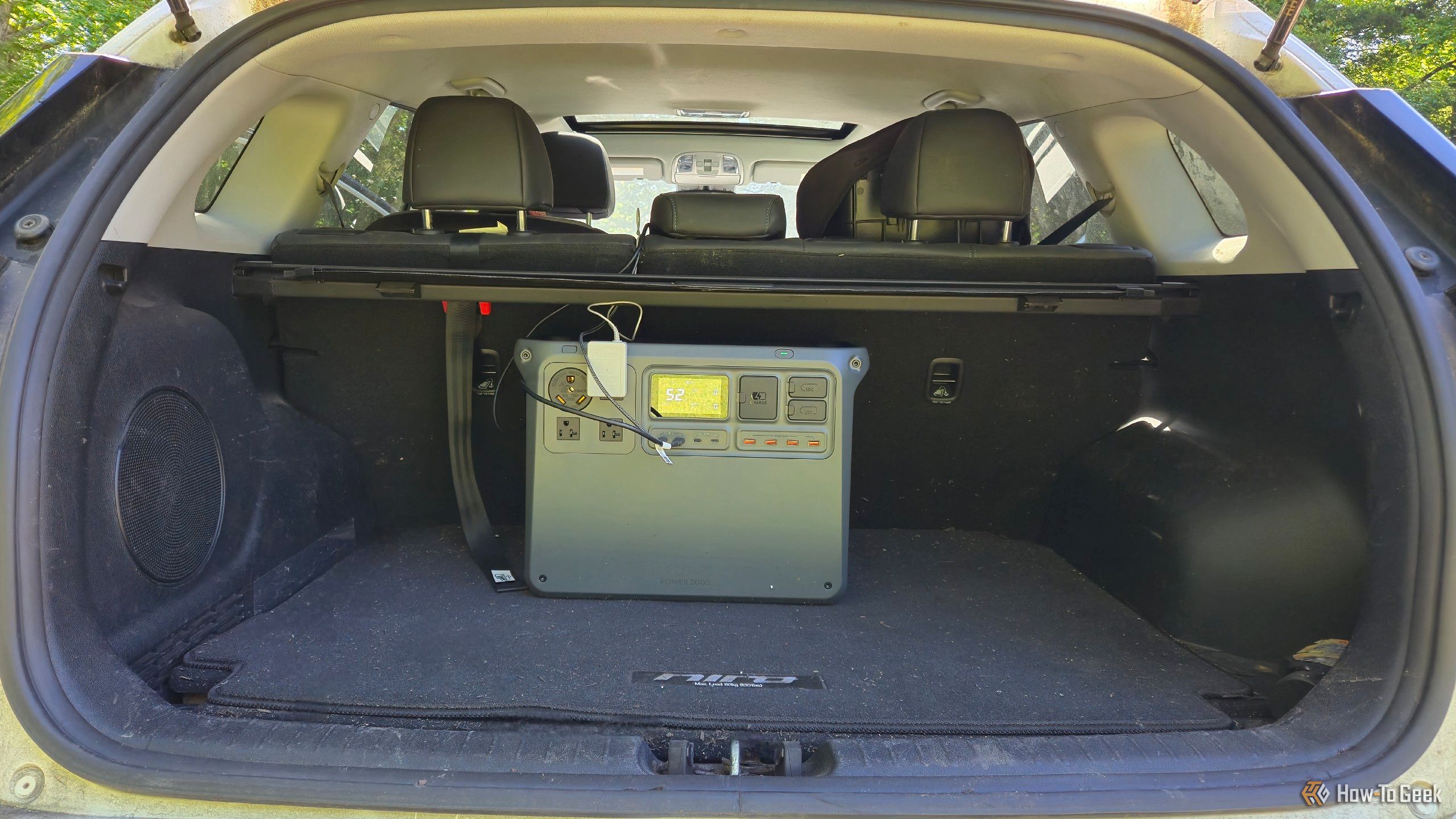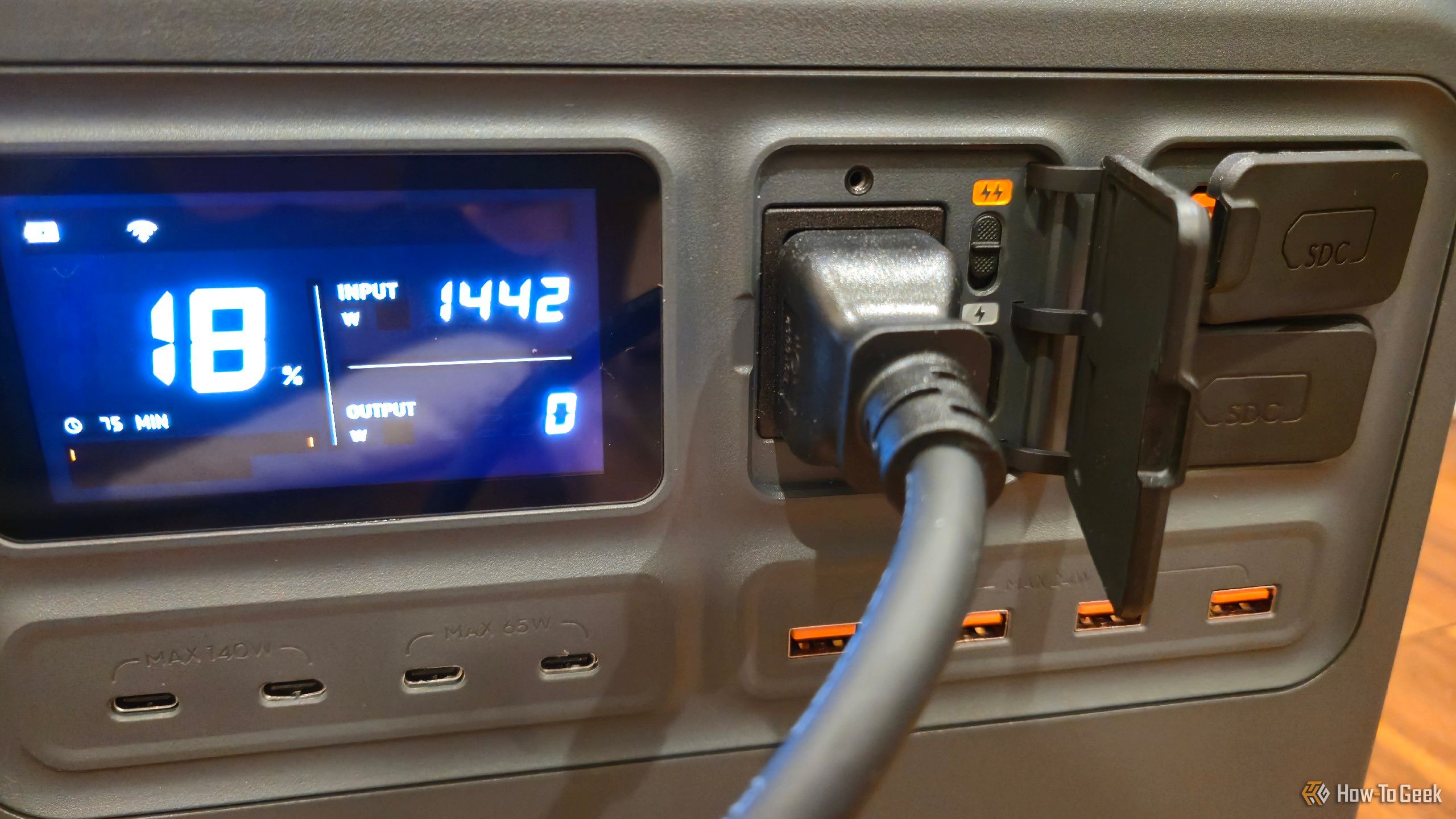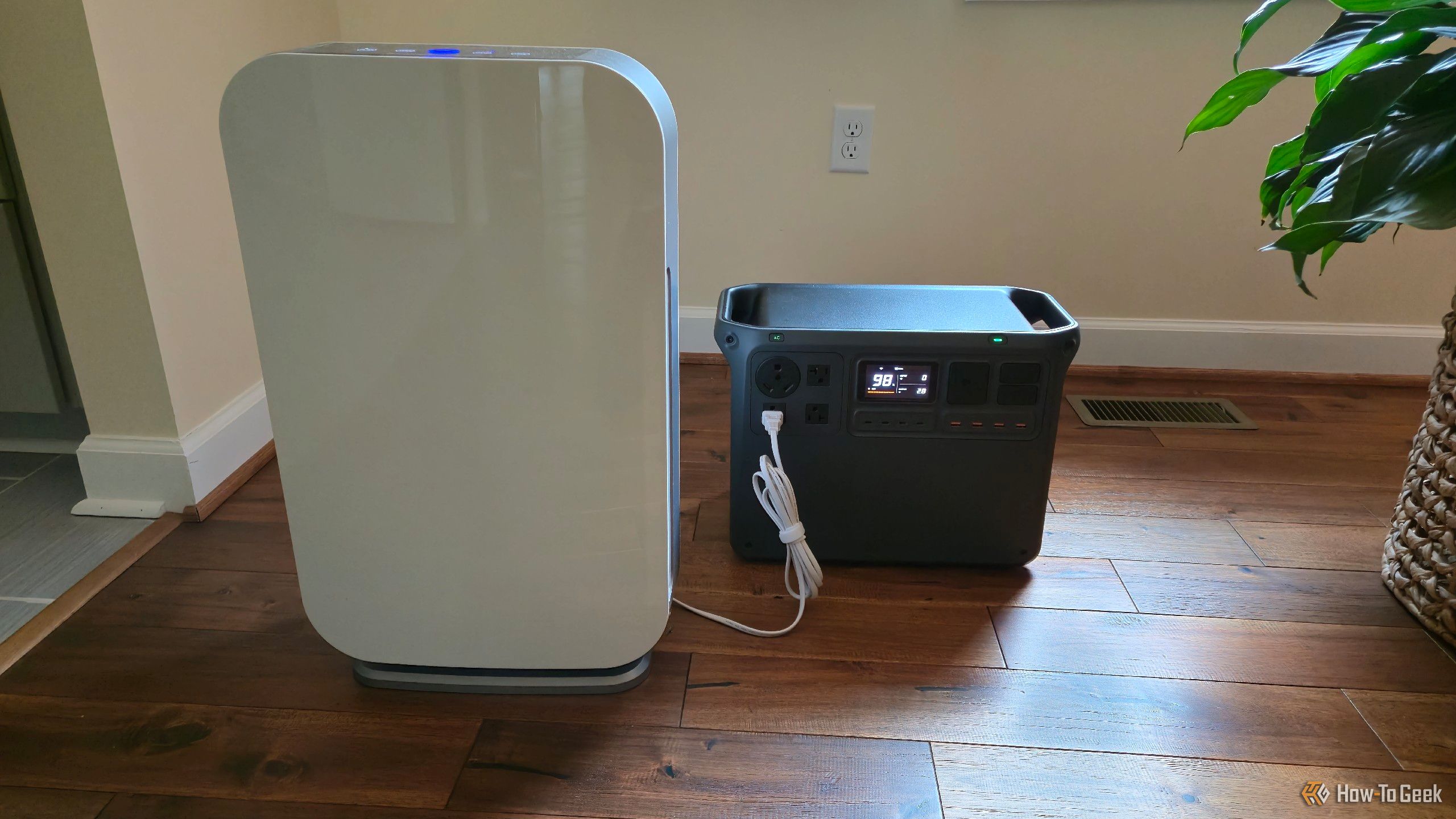The DJI Power 2000 is the largest portable power station yet from this popular drone manufacturer. It's a competent product, but there's not quite enough here to recommend over the more experienced competition.
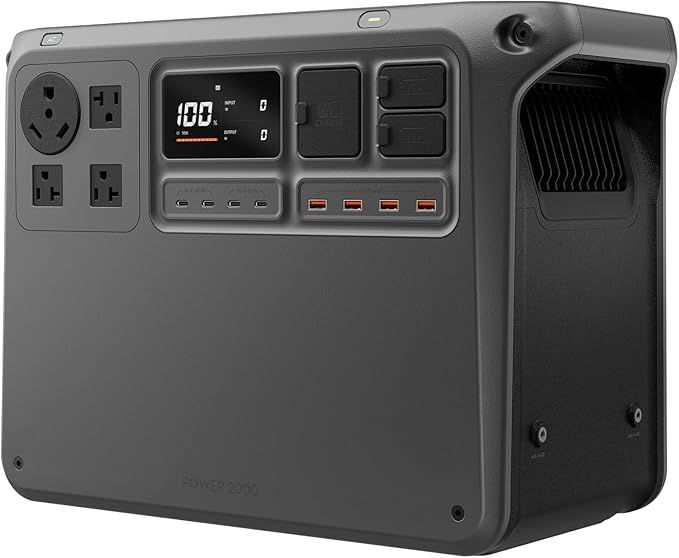
DJI Power 2000
- Brand
- DJI
- AC Output ports
- 4
- AC Input rating
- 1800W
- Solar input rating
- 1800W via adapter
The DJI Power 2000 doubles the capacity of the DJI Power 1000 while increasing power output to 2200W and increasing the number of ports. Compared to more affordable and versatile alternatives, the DJI Power's main advantage is, perhaps unsurprisingly, its ability to fast charge DJI drones via two SDC ports.
- Subdued, neutral design
- Reliable power
- Versatile companion app
- Complex solar charging
- Non-competitive price
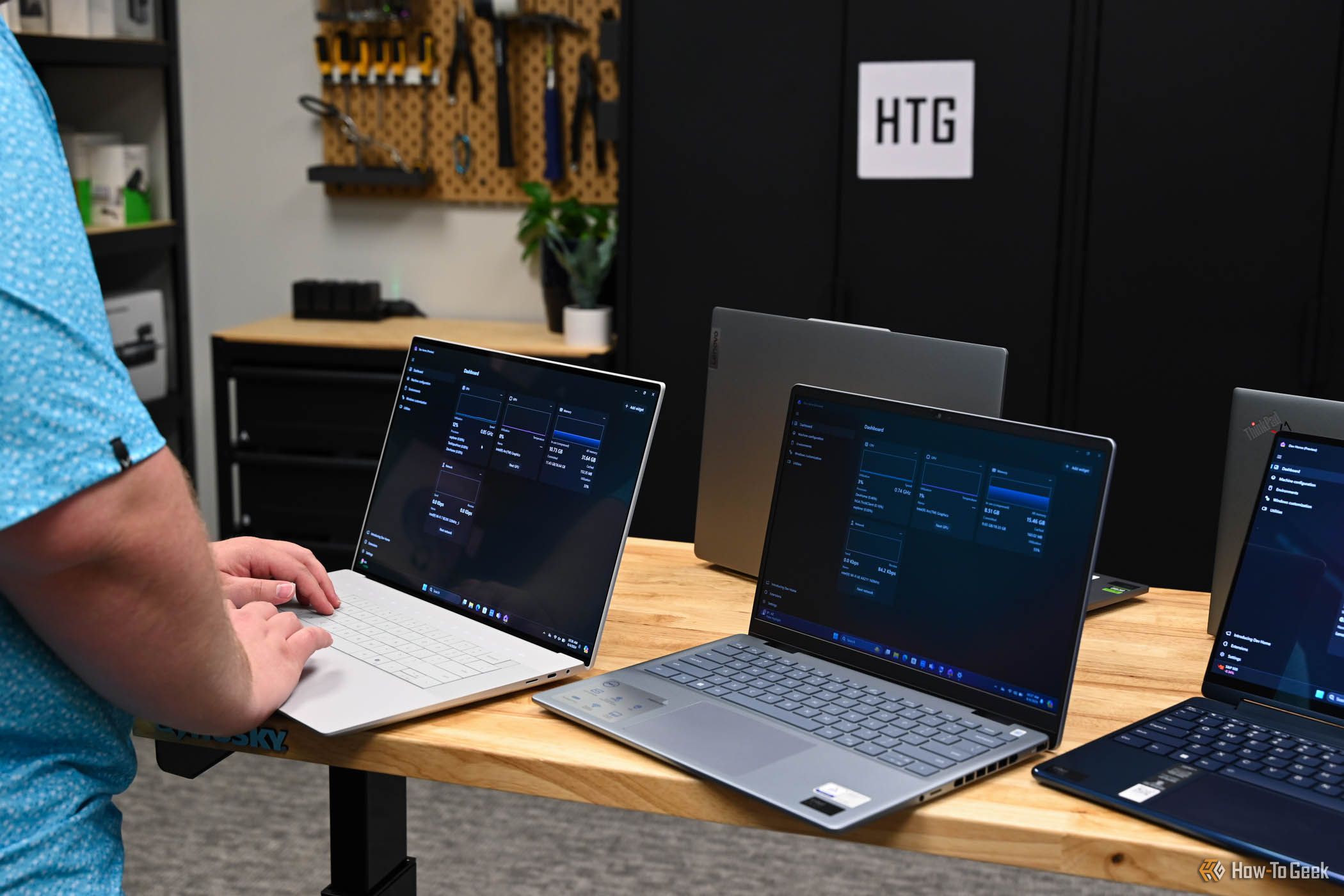
How We Test and Review Products at How-To Geek
We go hands-on with every product to ensure it's worth your time and money.
Price and Availability
DJI's power station comes in one version priced at $1300. You can purchase it via Amazon or DJI's website.
Specifications
- Brand
- DJI
- AC Output ports
- 4
- AC Input rating
- 1800W
- Solar input rating
- 1800W via adapter
- USB Ports
- 4 USB-A, 4 USB-C
- Expandable
- Yes
- UPS Mode
- Yes
A Neutral, Almost Spartan Design
The DJI Power 2000 portable power station is a follow-up to the DJI Power 1000. The 2000 refers to the amount of storage this unit is packaging, which at 2048Wh is twice the storage capacity of the prior unit. You can hook up to ten additional expansion batteries, bringing the capacity all the way up to 22,528Wh. Though if you have that much space to work with, you're probably better off with a more powerful system.
The DJI Power 2000 comes with twice the AC ports on the front as the prior model, three of which are for regular wall plugs and the fourth being a connector for RVs.
You also get twice the USB ports, bringing the new unit up to four USB-C and four USB-A. Plus, there are two ports that, as someone who doesn't own any DJI drones, I didn't immediately recognize. These are the two SDC (smart DC) ports used for fast-charging DJI's drones.
That's not to suggest that everything is double. The newer DJI Power's stable output has jumped up to 3000W, up from 2200W on the older unit. That's still a notable improvement nonetheless, giving you extra breathing room when running more demanding appliances like microwave ovens. I plugged in a paper shredder and a popcorn maker, neither of which gave the DJI Power 2000 a hard time.
The unit's design hasn't changed a great deal from its predecessor. It's the same, but taller, with twice the battery capacity shoved into the bottom of the unit. While the product is still wider than it is tall, it's much less so. It almost looks square from the front.
Compared to other power stations, there's no folding handle like you might find on a smaller Jackery unit, nor does it have a carrying handle or wheels like some larger power stations. It has built-in carrying handles on the sides, like the Anker Solix C1000.
UItimately, the DJI Power 2000 is neither a looker nor ugly. It's a rather nondescript box that won't stand out tucked away under a home office desk or sitting in the back of a truck bed. To many, myself included, this is a benefit. Not everything needs to be bright orange or come with flashing blue lights. Though as much as I prefer minimalism, this does almost strike me as utilitarian to the point of being bland.
Bigger Isn't Always Better
When I first started buying portable power stations, I treated them the way I regarded other tech products. A bigger number on a spec sheet must be better than a smaller one. But I've since learned that a 400W foldable solar panel is substantially heavier and more unwieldy than a 200W one. The same can be said of power stations themselves.
A 1024Wh power station like the DJI Power 1000 is a tad heavy, but it's portable. You can slap it into the back of a car easily enough. A 3800Wh station like the Anker SOLIX F3800 Plus is only a couple dozen pounds lighter than I am and not something easy to lug around for most of us without the use of lifts and ramps. The DJI Power 2000 sits in the middle. I can pick it up and move it around, but it isn't pleasant.
I tossed the DJI Power 2000 in the back of my car as a backup power source for a day trip, but the unit was heavy enough to carry that even if I actually needed this much capacity on a trip, I'd rather split it across two smaller stations like the DJI Power 1000 instead.
I personally own an Anker Solix C1000 with 1024Wh of storage, but the power station I use most is the smaller and cheaper Anker SOLIX C300 (this one, but with AC ports) with only 300Wh of power because it's so easy to carry. It's lightweight for road trips, camping, and just supplying power outlets around the house away from a wall. The DJI Power 2000 is just large enough that once I decided where in my house I would keep it (subtly tucked away under the desk my wife and I share in our home office), I really didn't want to move it all that much.
Fast Charging, With Awkward Solar Inputs
The DJI Power 2000 can theoretically pull 1800W from a standard wall outlet. That means you can fully charge the unit in advertised speeds of around an hour and a half. There's a switch next to the port for the charging plug, where you can toggle between prioritizing fast charging or opting to preserve the battery. With fast charging, I experienced speeds of over 1400 watts, whereas preserving battery limited charge speeds to around 1100-1200W instead. In practice, this amounts to a difference of only 10-20 minutes in charge time. To get closer to the advertised speeds, there's a "Super Recharging" toggle tucked away within the app.
While the DJI Power 2000 can charge faster than the previous model, the time it takes to fully charge the unit has increased from 70 minutes up to 90 minutes. The time it takes to reach 80% remains similar, up from 50 minutes to just 55, but with twice the capacity, that means you're looking at over 1600Wh of energy when you leave this unit at 80%, compared to around 800Wh on the original. That's more than a fair trade.
The beauty of these portable units is that there are many ways to charge them. If you're regularly on the road, you can charge the DJI Power at 1800W when paired with a super fast car charger, an extra accessory that requires special installation. This fast car charger and solar panels can work together to charge the power station at 1800W, the same speeds as a wall outlet. This is not a use case I can test, but it's something to keep in mind if you're looking into this unit for RV or van life.
That said, charging this power station with solar alone can be a bit awkward. The unit comes with neither XT60 nor 8mm ports, which are commonly used to connect solar panels to other portable power stations. Instead, the power station requires a separate DJI Power solar panel adapter module, which comes in with three XT60 ports. The adapter I was provided supports up to 200W panels, but maxes out at 400 watts. You can plug up to two adapters into the DJI Power 2000.
This means I have to grab all the cabling I would usually grab to plug my foldable panels into my existing Anker power station, but I need to remember to grab an additional adapter or two as well—otherwise I won't be able to charge the DJI Power 2000. To use any panels, including the 100W Zignes panel DJI provided for this review, I still had to use the adapter. And to reach its max speeds, I'm looking at grabbing four-to-six portable panels, when similar stations can reach the same speeds using just two. Thankfully, there are screws provided that can mount an adapter to the side of the unit if you plan to charge via solar often.
The DJI Power 2000 charged from the 100W Zignes panel just fine, but if you're not familiar with solar charging, know that a 100W panel is woefully insufficient to charge a battery of this size. 100 watts is the maximum this panel could theoretically produce in an hour, and you can more realistically expect to generate around 70-90 watts per hour in direct sun instead. When you divide 2048 by 90, you can see we're looking at a matter of days, not hours, to recharge the unit.
Unfortunately for me, the DJI Power 2000 did not accept power from my Anker PS200 solar panels, which could have sped the process along. Two Anker PS200 panels could charge at over 300 watts per hour, but these panels exceed the limited max open circuit voltage of DJI's adapter.
Fortunately, DJI offers a newer adapter that can receive up to 1200W of solar input and works with higher voltage panels. With several 400W panels paired to this new adapter, you can charge the DJI Power 2000 in just a couple of hours—but you're still having to pay extra for adapters that other similarly-priced options don't require.
An App For Info, Settings, and Updates
DJI provides a mobile app for connecting to the DJI Power 2000 over Bluetooth, which you can use to configure the power station and monitor energy usage. I used the app to successfully apply a firmware update at first launch.
Once updated, the app shows how much power is currently going into and out of the device, matching the information shown on the power station's small LCD screen. You can remotely enable the AC ports from the app, but that's about it as far as controlling the unit. The primary use is monitoring how much power you have remaining and how much juice is going where.
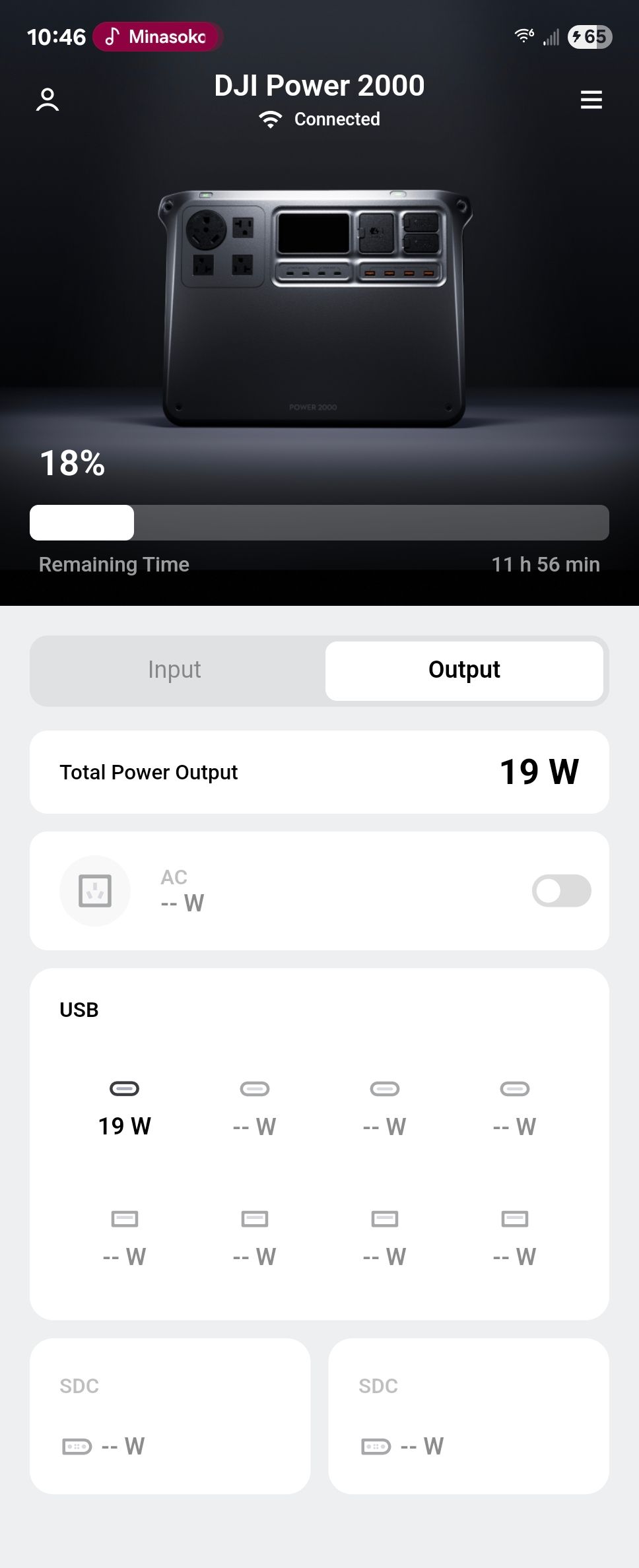
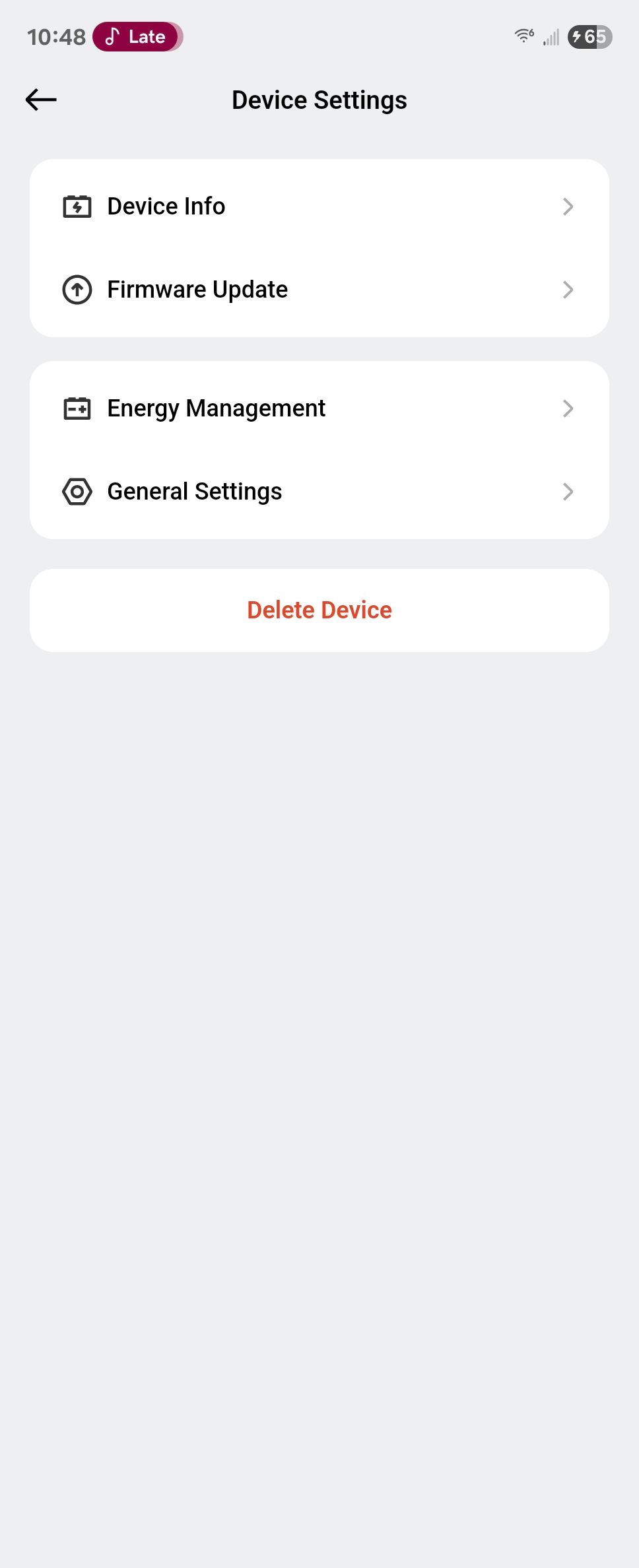
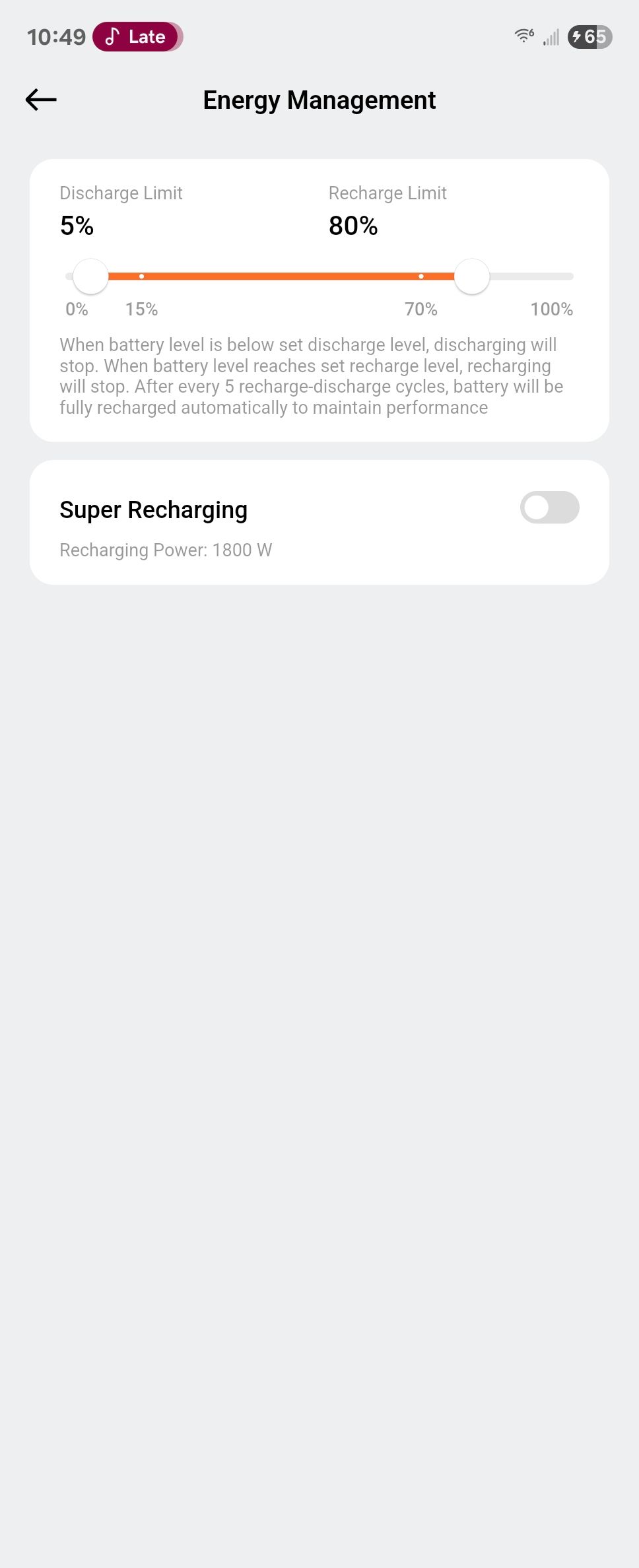
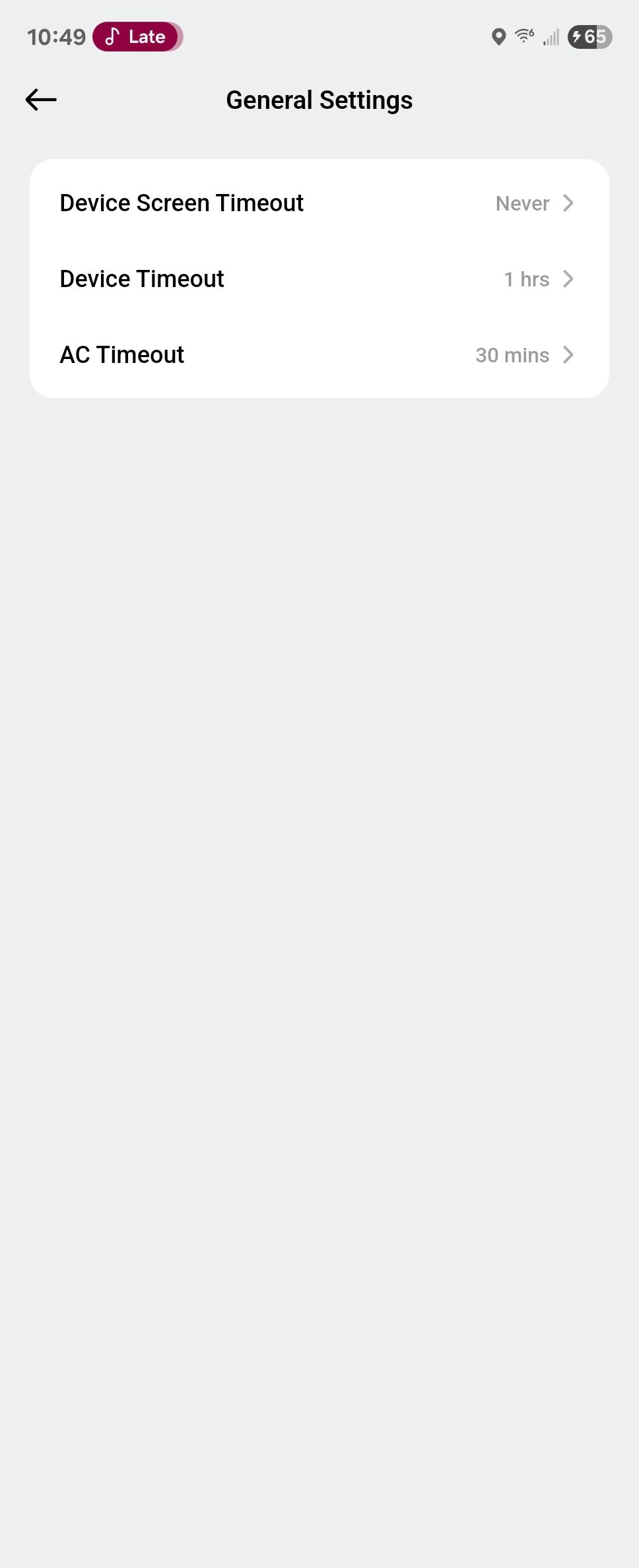
While there aren't many settings packed into the app, I do appreciate that it includes options for setting both a maximum charge threshold and a minimum discharge limit. This means your station can be told to stop charging at 80% if you plan on sticking it in a closet once it's charged, and you can tell the battery to stop powering other devices if it drops to 5% battery remaining.
Should You Buy the DJI Power 2000?
There are plenty of people I can see benefiting from a power station of this size, since it's at the upper end of the amount of power you can pack into a unit that isn't large enough to require wheels.
Yet this isn't a battery I would consider buying. Personally, I rather own two lighter 1024Wh power stations than one massive 2048Wh one. And for appliances too powerful for a smaller battery, I have the storage for larger options like the Anker SOLIX F3800, the Jackery Explorer 5000 Plus, or the EcoFlow Delta Pro that can put out 2-4 times as much power and last twice as long. I also depend on solar as my primary means of refueling during an outage, and that's an area where the DJI Power 2000 overcomplicates things.
Compared to a direct competitor like Jackery, the DJI Power 2000 sits somewhere between the Jackery Explorer 2000 v2 and Jackery Explorer 2000 Plus. DJI's battery offers more ports than the former but less power than the latter. I'd pick the DJI Power 2000 on looks, but absent a good sale, I see little that sets this apart from other 2048Wh stations—unless, that is, fast-charging drones is your top priority.

DJI Power 2000
- Brand
- DJI
- AC Output ports
- 4
- AC Input rating
- 1800W
- Solar input rating
- 1800W via adapter
The DJI Power 2000 doubles the capacity of the DJI Power 1000 while increasing power output to 2200W and increasing the number of ports. Compared to more affordable and versatile alternatives, the DJI Power's main advantage is, perhaps unsurprisingly, its ability to fast charge DJI drones via two SDC ports.


